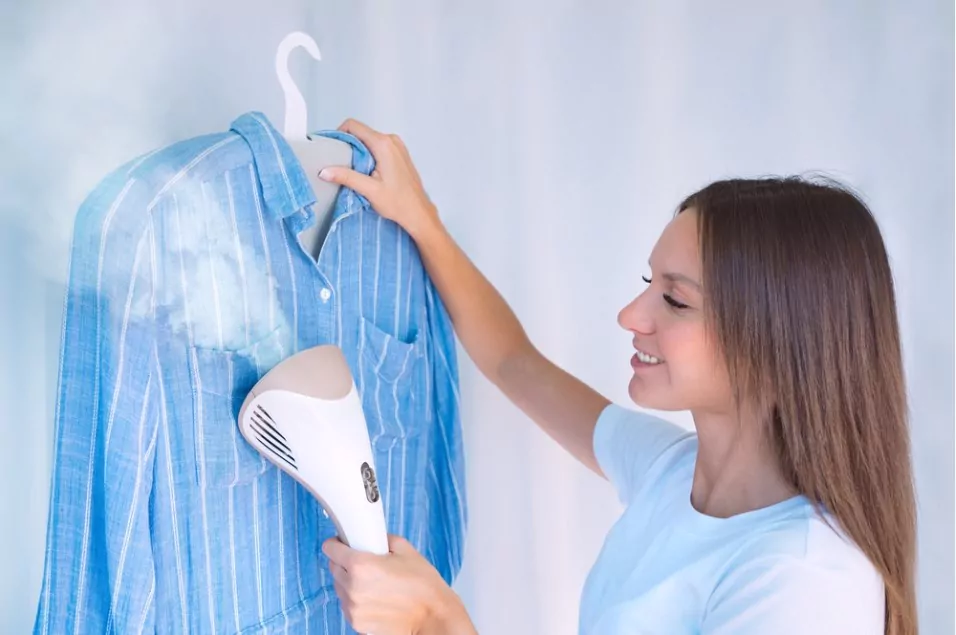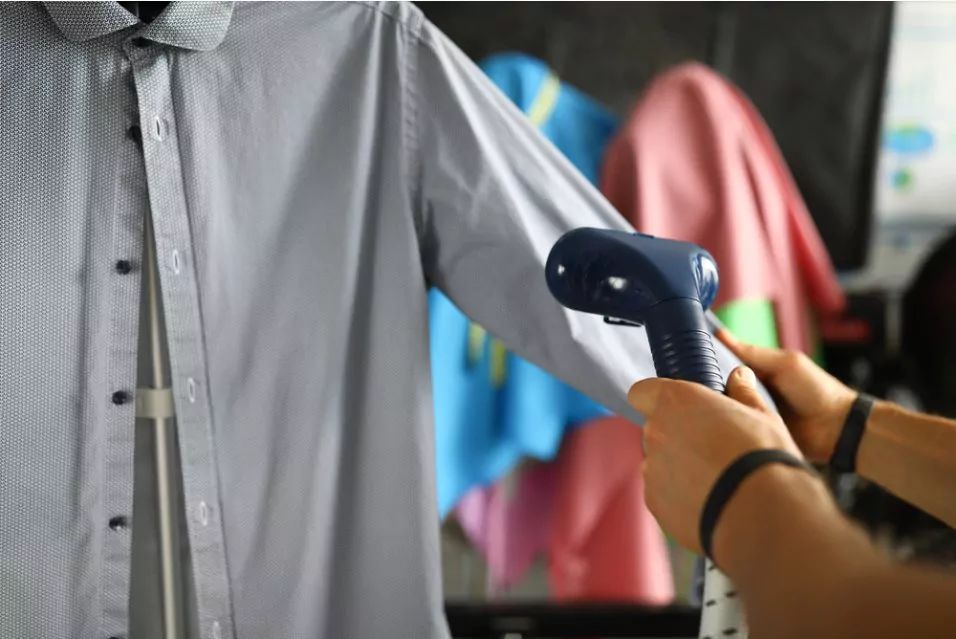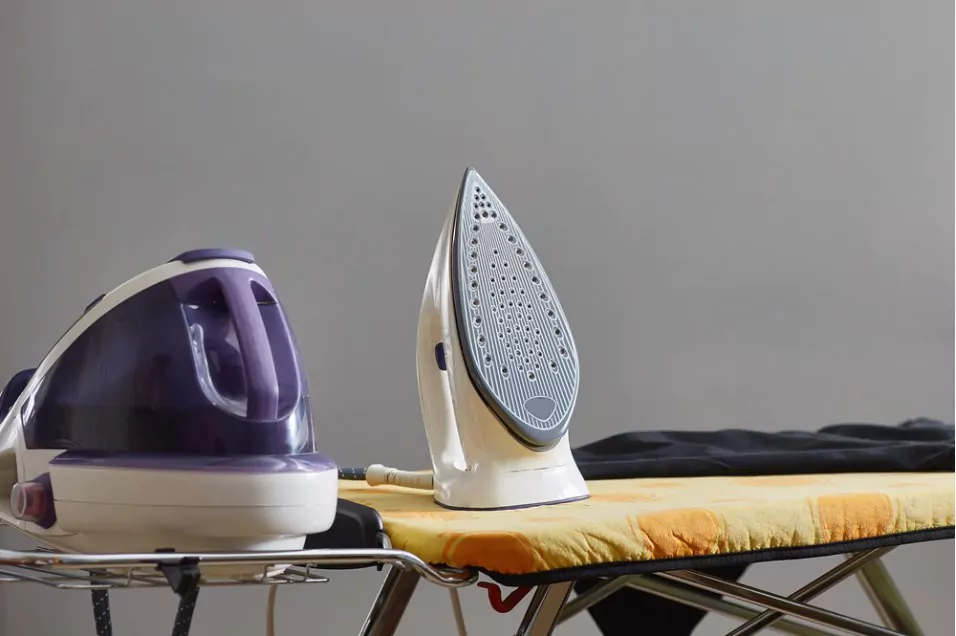How To Use Steam Iron For Clothes

A garment steamer works on the principle of transforming water into steam at higher temperatures using temperature control. Steam, sometimes coupled with slight pressure from the steamer’s surface, relaxes the fibers of garments instead of flattening them. An air jet of steam is typically directed at the surface of a garment using either a wand or smaller, more compact unit.
As a general rule, the garment steamer should be used from a shortest amount distance from the garment to avoid overheating or to ensure the clothes do not get damaged. However, if you feel that you need a more proper creased garment, you can apply more pressure. When steaming thick and heavier fabrics like denim and flannel higher settings are used, while moderate settings are used with more softer fabrics. The majority of portable steamers used previously did not have temperature control settings, so they tend to operate cooler than traditional steamers available in today’s market.
1 How to use a garment steamer to steam clothes?
Hang your delicate fabrics properly

A major difference between steaming and ironing clothes is how you prepare your garments. A garment steamer works best when you hang up your delicate fabric. Therefore, the first step is to properly hang up your smooth fabrics on a coat hanger.
Let your clothes steamer produce steam

The majority of handheld garment steamers heat up and generate steam within a few minutes. Steamers should always be heated properly for 1-2 minutes up before being used on clothing.
In addition to removing wrinkles quickly, the steam stream is steady enough to prevent the steamer from spitting on your clothes if there’s still some water left in the nozzle.
Always use distilled water to fill the water reservoir
It is advisable to use distilled water with garment steamers to avoid harming both the steamer and your clothes.
You should avoid using tap water because steamers can also become clogged with minerals, requiring more frequent deep cleanings that can reduce their lifespan.
Ensure your clothes are free from stubborn creases

While steaming and removing wrinkles from a shirt or a dress, people usually let it hang loosely, which is a huge mistake. The primary operation of a garment steamer is to relax the fabric fibers, but if you allow it to hang up there, the fibers may return to their original wrinkled state.
Be sure to remove wrinkles as much as possible and place the garment steady and straight. Start steaming the garment from the top and come down slowly. For better results, make sure to pull and stretch the garment from the bottom. By following this practice, you will notice that the surface is smooth and wrinkle-free when it dries.
Place the nozzle in a proper position

Pay attention to where the hose is, and make sure that it doesn’t get folded or double-crossed unnecessarily. We would normally use a steam iron with a flat head pressed directly onto the garment, but it doesn’t work with a clothes steamer because there is no space for all the heat and steam to escape.
Instead of pressing the clothes steamer head right up against the fabric, lean it towards the front from a slight distance so that only the top curve touches the clothes with your other hand make sure the material is stretched and stroke the clothes up and down with the clothes steamer head.[1]
2 Garment steamers vs Steam Irons

To put it simply, both steamers and steam irons use heat for getting rid of wrinkles from clothing, though an iron uses pressure, whereas a steamer also relies on moisture to get rid of wrinkles. To utilize this steam, a majority of dry iron also known as steam iron comes with steaming capabilities.
In addition to steaming functions, many modern irons have moisture-capable technology.
When it comes to getting the perfect crisp press, steam ironing is the best method. Steam irons operate with only electricity. By passing electricity through a special coil, the steam iron is heated, and all the heat is transferred to the soleplate. As soon as the iron plate becomes completely hot, the water from the water tank drips into it, causing steam to be produced. During this process, the steam is projected outwards, which softens the garment fibers for a perfect finish.
3 Tips for using steam iron with an ironing board
- You can remove burnt materials from your iron’s soleplate by heating it to its hottest temperature. Spread a brown bag or newspaper over the surface and sprinkle abundantly with salt. Heat the iron and rub it on the paper to remove the burned material.
- Make sure your garment is getting the right amount of heat by checking your temperature settings in the steam option.
- Always be careful not to directly iron wool or any other kind of soft and thin fabrics like silk or velvet. If you are ironing any of these materials, always spray water before you start to iron your garments.
- In general, irons can easily glide on smooth fabrics like a linen garment, but you will always face some difficulties while ironing cuffs, sleeves, pleats, and ruffles. Also, remember that fabrics that are heavier in weight like twill or Pima cotton can be ironed smoothly with an iron’s hot plate.
4 Wrapping Up
If you are going on a date night or have an important interview coming up, steaming your clothes with the best garment steamer is an easy and cost-effective way to get them looking neat and wrinkle-free. Also, garment steamers offer various uses other than ironing clothes. We hope that you found this step-by-step guide on how to use steamer iron for clothes helpful. If you face any difficulties or have any suggestions, please let us know in the comment section below.
FAQ'S about Garment Steamer
Does steaming shrink clothes?
A garment steamer can shrink heavier fabrics like wool. We do not recommend steaming fabrics like leather which can easily melt at high temperature. There are also some fabrics that can shrink when soaked in water for longer periods. However, you can steam some light fabrics like cotton, polyesters, and silk. Be sure to check the label on the garment to check whether the garment is intended for ironing or dry clean.
How long should I steam my shirt?
You should steam your shirt for anywhere between 10-15 minutes for a crease-free and wrinkle-free texture.
What fabrics should not be steamed?
Fabrics like velvet, velour, suede leather, wool, or any other fabric which can melt easily with a high temperature should not be steamed. Steaming these fabrics will ruin its overall texture.
Is steam good for drying clothes?
Yes, steaming is a good option if you want fresh clothes without having to wash them again and again. Steaming can help you with reducing wrinkles and removing sweat odours from your garments. Wet clothes can be steam cleaned to remove wrinkles or lightly worn, dry clothes can be refreshed without washing them with steaming.
How do you steam clothes properly?
1. Hang your delicate fabrics properly.
2. Let your clothes steamer produce steam.
3. Always use distilled water to fill the water reservoir.
4. Ensure your clothes are free from stubborn creases.
5. Place the nozzle in a proper position.
Community Q&A
References
-
1.
Ya-Chuan Ko: A Study of the Hand Operating Thresholds during the Usage of an Electric Steam Iron by College Students. - Retrieved on May 25, 2023
About This Article
This article has been viewed 684 times.



